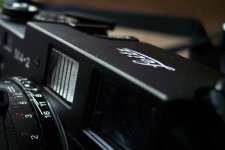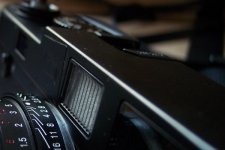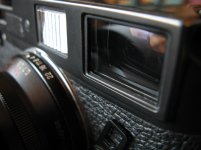The initial series of M4P's 1539xxx or something like that and up to 161xxxx were brass top plates (recessed windows). I had a couple of M4P's in the 1618xxx and they were brass and my M4P s' in te 1620xxx were zinc! There were some later M4P's with brass, but most were zinc die cast with flush windows. There is really no problem with either version. The zinc top plate does not "dissipate" hard knocks and can crack (very rare and you REALLY have to bang it or drive over it). The brass is a bit softer and would dent and in doing so absorb some of the momentum.
You really have to put a lot of film through a brass top M4P to show brass. The black chrome (ELOXAL) is very durable and when worn through, the nickel substrate shows up. Not until you worn through that will you see brass.
The last series of M4P were in 1987, chrome with single synch contacts at the back (X synch only). Some left over stock remained in the cataloque until 1988/89. Interestingly enough, the origianal pricing of the M6 was roughly what a M4P and a Leica MR Meter would cost.
Occasionally you will find earlier M4P's with zinc tops, but that usually meant that the top plate had been replaced after a mishap.
There were a few late M4P's and early M6's that had problem with the black chrome "bubbling" from a galvanic reation between the zinc and air (particularly salt laden sea side air). However. most of that problem was with the early R6, not the m's.
The baseplate was always brass. There was a Midland trial with cast zinc baseplates, but the thin flange and the "catch" for the lock could crack. I had a handful of these for testing in the mid 80's. but they never made production.





